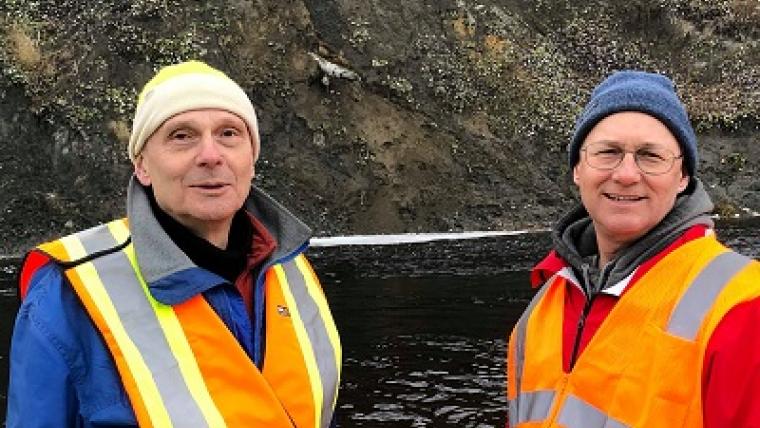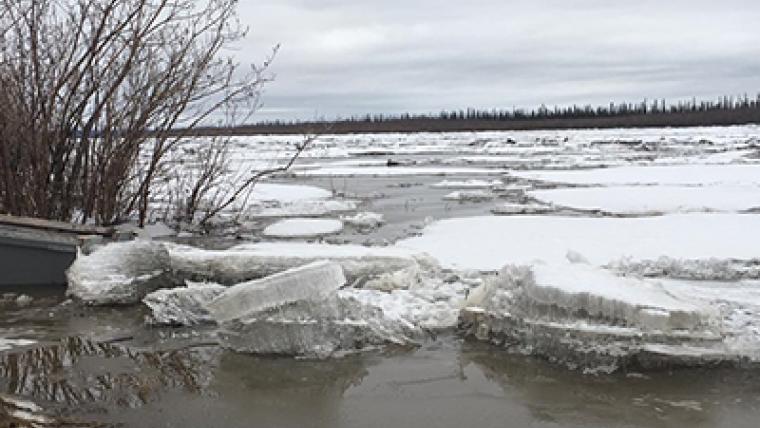“Current events” - New sensors protect pipelines, power lines and more
By Ethan Walker
September 13, 2018
Larger image
Andrew Lackey, Research Engineer, using sensor technology to measure geomagnetically-induced currents.
When it comes to weather, it’s not just storms that get our attention. The same is true of space weather and the geomagnetic activity produced by the sun.
In 1989, a solar storm left six million Quebecers without power for hours. Such storms are exceptional and unpredictable. But we also need to keep an eye on everyday geomagnetic currents from the sun, which cause wear and tear on our transmission lines, generating plants, dams and even pipelines.
Andrew Lackey has developed sensors to help protect this type of infrastructure from Geomagnetically Induced Currents (GICs), keeping our electricity flowing. A research engineer with Natural Resources Canada, Lackey defines GICs as “currents flowing in conductors along the earth’s surface that are generated through fluctuations of the magnetic field around the earth.”
Spills and chills
Lackey’s smart sensors can help reduce corrosion that can make pipelines fail and damage power lines. Knowing the extent of the GICs and the damage they can cause allows utilities to take preventive measures. One such measure is cathodic protection, which includes applying voltage to the skin of the pipeline. You can configure pipelines with this protection when they are built or add it later.
Larger image
Sensors for space weather.
GICs can also lead to the deterioration of power transformers, which are filled with mineral oil. This creates a risk of spills and fires. Lackey’s sensors help to determine how much load a transformer can hold. The data from sensors helps to adjust the load on transformers in accordance with geomagnetic conditions and ongoing deterioration. This can increase lifespan of transformers, saving taxpayer dollars, and making them safer.
Risk management
Large utilities can hire specialists who can interpret data and calculate the risks of GICs affecting their power grid. Smaller municipal utilities do not always have that capacity. “There are monitoring tools available,” says Lackey. “They just aren’t as easy to deploy as medium and smaller utilities require.”
Lackey’s sensors make it easier to assess GIC risks without extensive knowledge of space weather and without breaking budgets. His sensors provide more detailed data than many small utilities have now, so they have shown strong interest in his work.
When used for transmission lines, the sensors complement smart grid networks and their increasingly communication-enabled infrastructures. Even a single sensor can be useful but, the larger the infrastructure, the more sensors are needed.
Larger image
Andrew Lackey, Research Engineer, explaining how he uses sensors to monitor geomagnetic currents in energy infrastructure.
Where industry, science and policy meet
What Lackey finds most rewarding about his work is “that you can see exactly where our science benefits industry. We’re working directly with industry, getting feedback from them and talking to them…finding out their needs”.
As a government engineer, Lackey enjoys the interplay between science and policy. “They are two sides of the same coin,” he says. “Science helps make sure that policy is grounded in evidence. Policy ensures that science is grounded in terms of strategy.”
Putting sensors to the test
Now, the sensors are ready for testing. So Lackey and his team are on the lookout for utility companies to collaborate on innovative projects. One of the goals is for utilities to confirm that they are confident that the sensors will prevent the undue influence of GICs. So far, the methodology looks promising.
Page details
- Date modified:


